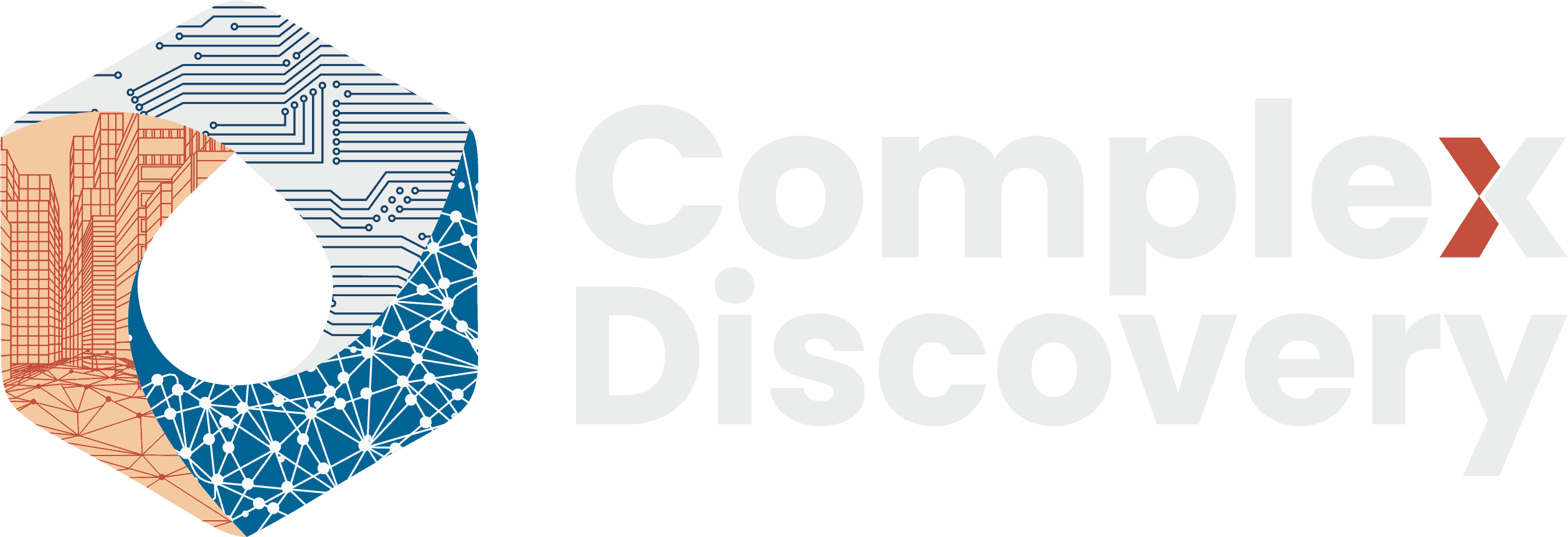Editor’s Note: Tariffs may seem like a geopolitical lever, but their real impact reverberates through server racks, cloud platforms, and courtroom strategies. As U.S.–China trade tensions escalate, the resulting tariffs—especially on semiconductors—are reshaping how cybersecurity, information governance, and eDiscovery professionals plan, budget, and deliver services. This article unpacks how increased costs, supply chain uncertainty, and shifting infrastructure strategies are converging to redefine the operational landscape of digital legal work. For those navigating this evolving terrain, understanding the implications of tariff policy is no longer optional—it’s strategic.
Content Assessment: Digital Justice or Divide? Legal Tech Faces Tariff Headwinds
Information - 94%
Insight - 95%
Relevance - 92%
Objectivity - 92%
Authority - 91%
93%
Excellent
A short percentage-based assessment of the qualitative benefit expressed as a percentage of positive reception of the recent article from ComplexDiscovery OÜ titled, "Digital Justice or Divide? Legal Tech Faces Tariff Headwinds."
Industry News – Technology Beat
Digital Justice or Divide? Legal Tech Faces Tariff Headwinds
ComplexDiscovery Staff
How escalating trade policies reshape cybersecurity, information governance, and eDiscovery infrastructure
The ongoing evolution of US tariff policy continues to reshape global industry, with the technology sector navigating particularly intense challenges that cascade directly into cybersecurity infrastructure, information governance frameworks, and eDiscovery operations. Trade actions implemented through 2025 have driven tariff rates on imports from China to record highs—ranging from baseline increases of ten percent on many goods, to headline-grabbing rates of 50 percent for semiconductors, and 100 percent for electric vehicles. In some cases, with the stacking of multiple duties and retaliatory actions, tariff exposure on select Chinese-origin goods has briefly exceeded 100 percent, though these extreme rates tend to apply to specific products and may fluctuate with ongoing trade negotiations.
As of August 2025, a 90-day US–China tariff truce has temporarily capped most tariffs on Chinese imports at 30%, providing relief from previously threatened, much higher rates during the critical end-of-year supply season. However, this cap does not apply to all categories—semiconductors remain subject to a 50% tariff, and electric vehicles are still at 100%. This truce, now extended until mid-November 2025, offers businesses a short-term window of predictability as both nations continue trade negotiations, but the risk of renewed escalation persists and must be factored into long-term planning.
Semiconductor Supply Chain Disruption: The Foundation of Digital Infrastructure
Semiconductors, the strategic cornerstone of modern technology and the beating heart of every data center and eDiscovery platform, are now subject to a US tariff of fifty percent on imports from China, representing a sharp escalation from earlier rounds. While there have been public threats by the administration to impose semiconductor tariffs as high as 100 percent or even 300 percent, as of late August 2025, the highest confirmed and implemented rate stands at fifty percent. These new duties have sharply increased costs for US companies relying on Chinese chip production and have added to the motivation for reshoring supply chains and diversifying sourcing, especially for manufacturers of artificial intelligence hardware and devices that power modern legal technology infrastructure.
The implications for information governance and eDiscovery operations are important to consider. Every server processing electronically stored information (ESI), every cloud storage system housing litigation data, and every AI-powered document review platform depends on semiconductor technology. When chip costs increase by 50 percent, the ripple effects reach into the pricing models of major legal technology providers, potentially altering the economics of large-scale data processing and storage that define contemporary eDiscovery workflows.
Cloud Infrastructure Under Pressure: Where Data Lives and Litigation Breathes
Cloud services giants like Amazon Web Services, Microsoft, Alphabet, and Meta continue to invest aggressively in expanding U.S.-based data centers for AI—investments that now exceed a combined $320 billion across these four companies for 2025 alone. While their core infrastructure is still heavily dependent on chips produced in Taiwan and South Korea, the tariff environment has increased the risk premium on all semiconductors, regardless of origin, and driven further efforts to localize or secure those supply chains.
For cybersecurity and information governance professionals, this infrastructure shift carries critical implications. Data sovereignty requirements become more complex when tariff policies incentivize domestic infrastructure expansion while simultaneously increasing costs for the hardware that makes such expansion possible. Organizations managing cross-border data flows for multinational litigation must now factor tariff-driven infrastructure costs into their data residency and processing decisions.
Consumer technology products such as smartphones, tablets, and laptops—the endpoints where much corporate data originates and through which remote eDiscovery work increasingly flows—remain largely exempt from the most severe new tariffs, though some models have faced incremental increases. More broadly, the effective pass-through of elevated component prices and persistent supply chain volatility is still impacting overall device costs for end-users, potentially affecting the technology budgets of law firms and corporate legal departments.
Information Governance Complexity: New Variables in Data Management
The economic divides created by these policies are widening, with particular implications for how organizations approach information governance. Industry organizations such as the National Association of Manufacturers continue to warn that the unprecedented unpredictability and heightened tariff levels are most acutely felt by small and mid-sized businesses, which have less capacity to absorb sudden shifts in material costs. This reality extends to mid-sized law firms and corporate legal departments that lack the economies of scale enjoyed by Am Law 100 firms in negotiating technology contracts.
Larger corporations are employing diversified supply chains, robust reserves, and the political influence needed to negotiate waivers or mitigate exposure, but companies with thinner margins face existential threats. In the legal technology context, this translates to a widening gap between organizations that can afford premium, domestically-sourced technology solutions and those forced to accept higher risks or reduced capabilities due to cost constraints.
Legal and compliance counsel have become key players as companies across sectors seek to renegotiate supply agreements, prepare for volatility in delivery and pricing, and ensure ongoing compliance with evolving tariffs. This legal complexity, previously the domain of specialized trade counsel, is now a central concern in boardrooms and C-suites, as tariff announcements can change cost calculations for projects overnight.
For eDiscovery and information governance professionals, this means that technology procurement decisions now require unprecedented cross-functional collaboration. IT infrastructure choices must be evaluated not only for technical capabilities and security features, but also for tariff exposure, supply chain resilience, and compliance with evolving trade regulations.
The Digital Divide and Access to Justice: ESI in an Era of Rising Costs
Social consequences are growing more acute as well. The rise in component and device costs, while still uneven across product categories, contributes to the persistent digital divide, particularly for lower-income Americans who rely most on mobile devices for internet access. Black and Hispanic communities, who are statistically more dependent on smartphones for education, healthcare access, and remote work, face mounting barriers as prices creep higher. Recent Pew Research data shows that 22% of Hispanic adults and 19% of Black adults are smartphone-dependent for internet access, compared to 12% of White adults, making tariff-driven price increases particularly inequitable.
This digital divide has direct implications for access to justice and the administration of legal services. As the cost of technology increases, the gap widens between those who can afford comprehensive digital tools for legal research, document management, and remote collaboration, and those who cannot. For legal aid organizations and pro bono practices that already operate on constrained budgets, tariff-driven technology cost increases can significantly limit their ability to serve vulnerable populations effectively.
Furthermore, as more legal proceedings incorporate digital evidence and require sophisticated eDiscovery capabilities, the economic barriers to accessing these tools become barriers to justice itself. When the hardware and software needed to process electronic evidence becomes more expensive due to tariff policies, it potentially creates a two-tiered system where economic resources determine the quality of legal representation available.
Electronically Stored Information in a Tariff-Driven World
While tariffs are not the only factor at play, their ripple effects add to the broader affordability crisis now facing the country’s most vulnerable populations and extend into how organizations approach electronically stored information management. The increased costs of storage hardware, processing capabilities, and cloud infrastructure directly impact how legal departments and law firms budget for data retention, processing, and production in litigation matters.
Organizations are increasingly forced to make difficult choices between comprehensive data preservation and cost management. When the servers, storage systems, and networking equipment essential for robust information governance programs become more expensive due to tariff policies, some organizations may be tempted to reduce their data retention periods, limit their eDiscovery capabilities, or accept higher risks in their information security postures.
Strategic Implications for Legal Technology Professionals
For the technology sector broadly, and for cybersecurity, information governance, and eDiscovery professionals specifically, tariffs are an inescapable element of strategic and financial planning—no longer a transient policy risk but a structural element that will shape investment decisions for years to come. Future competitiveness will rely not just on managing supply chains and building infrastructure, but on synthesizing operational agility with constant legal, regulatory, and financial vigilance.
Legal technology vendors must now factor tariff exposure into their product development and pricing strategies. Cloud service providers are accelerating domestic infrastructure investments while grappling with higher hardware costs. eDiscovery software companies are evaluating whether to absorb increased costs or pass them through to customers, with significant implications for access to justice.
For in-house legal and information governance professionals, this environment demands new skills and considerations:
- Supply Chain Risk Assessment: Understanding the geographic origins and tariff exposure of critical technology infrastructure
- Vendor Due Diligence: Evaluating how tariff policies affect vendor pricing, stability, and service delivery capabilities
- Budget Planning: Incorporating tariff-driven cost volatility into multi-year technology procurement and data management budgets
- Compliance Integration: Coordinating information governance policies with evolving trade compliance requirements
The Path Forward: Resilience Through Integration
In this uncertain environment, those who adapt most quickly will not simply withstand disruption but will emerge best positioned to thrive. For cybersecurity, information governance, and eDiscovery professionals, this means developing integrated approaches that account for the interconnected nature of trade policy, technology costs, and legal service delivery.
The organizations that will succeed are those that view tariff policy not as an external constraint but as one variable in a complex optimization problem involving data security, cost management, regulatory compliance, and service quality. They will invest in domestic technology partnerships, develop flexible procurement strategies, and build information governance frameworks robust enough to function effectively regardless of the underlying cost structure of technology infrastructure.
As we address this shifting trade framework, the legal technology community must remain vigilant, adaptive, and committed to ensuring that economic disruptions do not compromise the fundamental goals of cybersecurity, effective information governance, and equitable access to justice through sophisticated eDiscovery capabilities. The intersection of trade policy and legal technology has never been more critical—or more complex.
News Sources
- U.S. and China extend tariff truce deadline for another 3 months (NPR)
- Further Modifying Reciprocal Tariff Rates to Reflect Ongoing Discussions with The People’s Republic of China (The White House)
- How U.S. tariffs are reshaping the tech landscape (TechTarget)
- Biden finalizes China tariff hikes, including for EVs, batteries and solar panels (Utility Dive)
- How will Trump’s semiconductor tariffs affect the global chip industry? | International Trade News (Al Jazeera)
- How the Proposed Trump Tariffs Increase Prices for Consumer Technology Products (CTA)
- Trump 2.0 tariff tracker (Trade Compliance Resource Hub – ReedSmith)
Assisted by GAI and LLM Technologies
Additional Reading
- Editorial Intelligence: The Role of Agentic AI in Modern Publishing
- AI in Journalism: Enhancing Newsrooms or Undermining Integrity?
- The Rise of Techno-Journalists: Addressing Plagiarism, Patchwriting, and Excessive Aggregation in the Era of LLMs
- Combating AI Hallucinations: Oxford Researchers Develop New Detection Method
Source: ComplexDiscovery OÜ







































